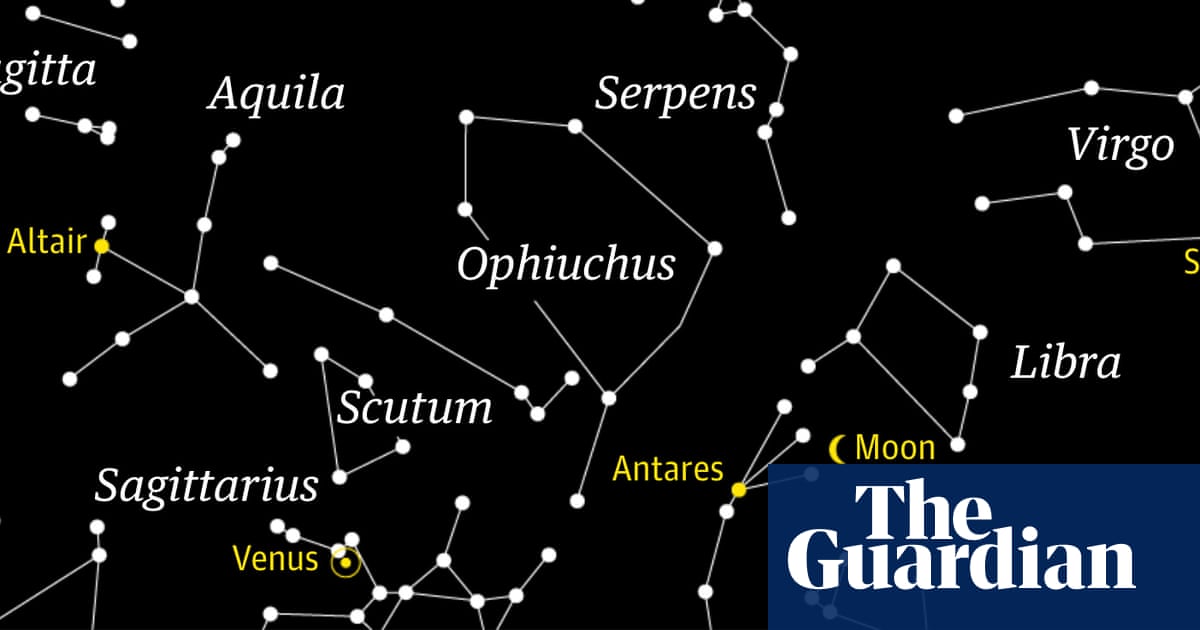
Venus is beautifully bright in the morning sky at the moment. The chart shows the view looking south-south-east from London at 7am GMT early in the week (and the view is easily visible from the southern hemisphere too).
The waning crescent moon will be fast approaching the horizon, and its phase will be shrinking. On successive mornings, it will pass by the red supergiant star Antares in Scorpius, the scorpion, before heading for a close encounter with Venus just 24 hours later.
Antares is gigantic, with 680 times the diameter, about 14 times more mass and almost 76,000 times the brightness of our own sun.
In comparison, Venus does not shine at all – despite what your eyes may tell you. Venus is about the same size as Earth and generates no light of its own, but appears bright to us because the highly reflective clouds that permanently enswathe the planet act as mirrors to the sunlight.
Catch Venus while you can. By the end of the month it will have drawn even closer to the sun from our vantage point and so will be much lower in the sky. It will then become lost in the dawn light by early March.
https://news.google.com/rss/articles/CBMiYmh0dHBzOi8vd3d3LnRoZWd1YXJkaWFuLmNvbS9zY2llbmNlLzIwMjQvZmViLzA1L3N0YXJ3YXRjaC1jYXRjaC10aGUtbGFzdC1kYXlzLW9mLWlsbHVtaW5hdGVkLXZlbnVz0gFiaHR0cHM6Ly9hbXAudGhlZ3VhcmRpYW4uY29tL3NjaWVuY2UvMjAyNC9mZWIvMDUvc3RhcndhdGNoLWNhdGNoLXRoZS1sYXN0LWRheXMtb2YtaWxsdW1pbmF0ZWQtdmVudXM?oc=5
2024-02-05 06:00:00Z
CBMiYmh0dHBzOi8vd3d3LnRoZWd1YXJkaWFuLmNvbS9zY2llbmNlLzIwMjQvZmViLzA1L3N0YXJ3YXRjaC1jYXRjaC10aGUtbGFzdC1kYXlzLW9mLWlsbHVtaW5hdGVkLXZlbnVz0gFiaHR0cHM6Ly9hbXAudGhlZ3VhcmRpYW4uY29tL3NjaWVuY2UvMjAyNC9mZWIvMDUvc3RhcndhdGNoLWNhdGNoLXRoZS1sYXN0LWRheXMtb2YtaWxsdW1pbmF0ZWQtdmVudXM
Tidak ada komentar:
Posting Komentar